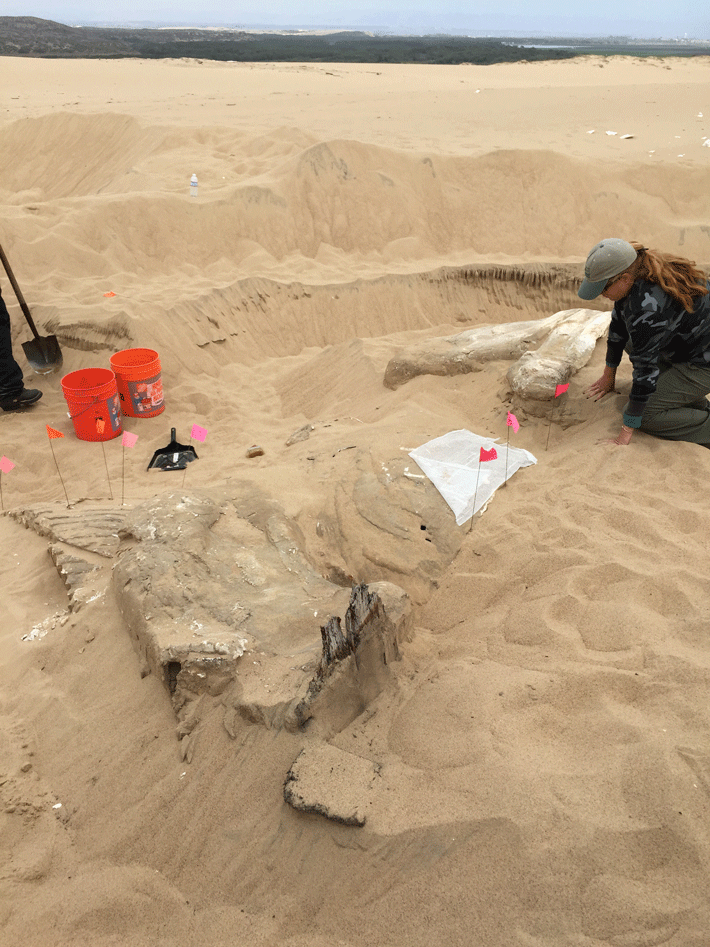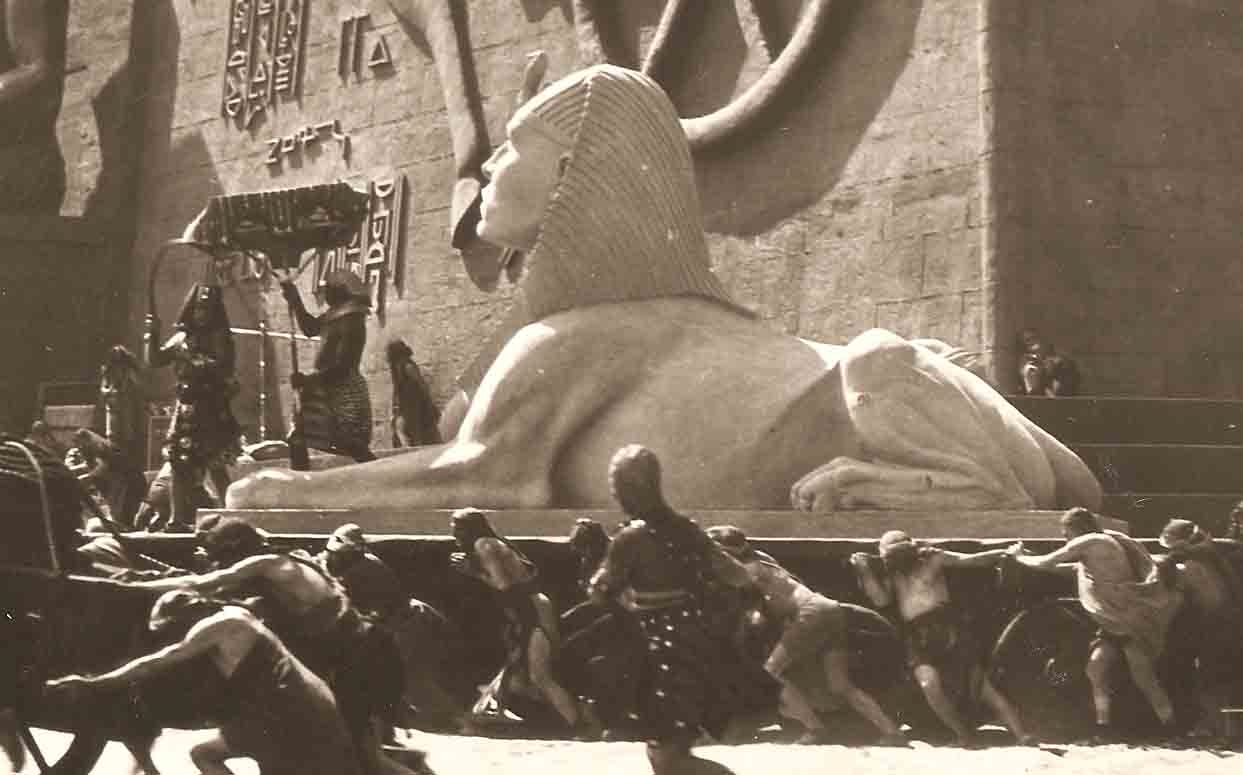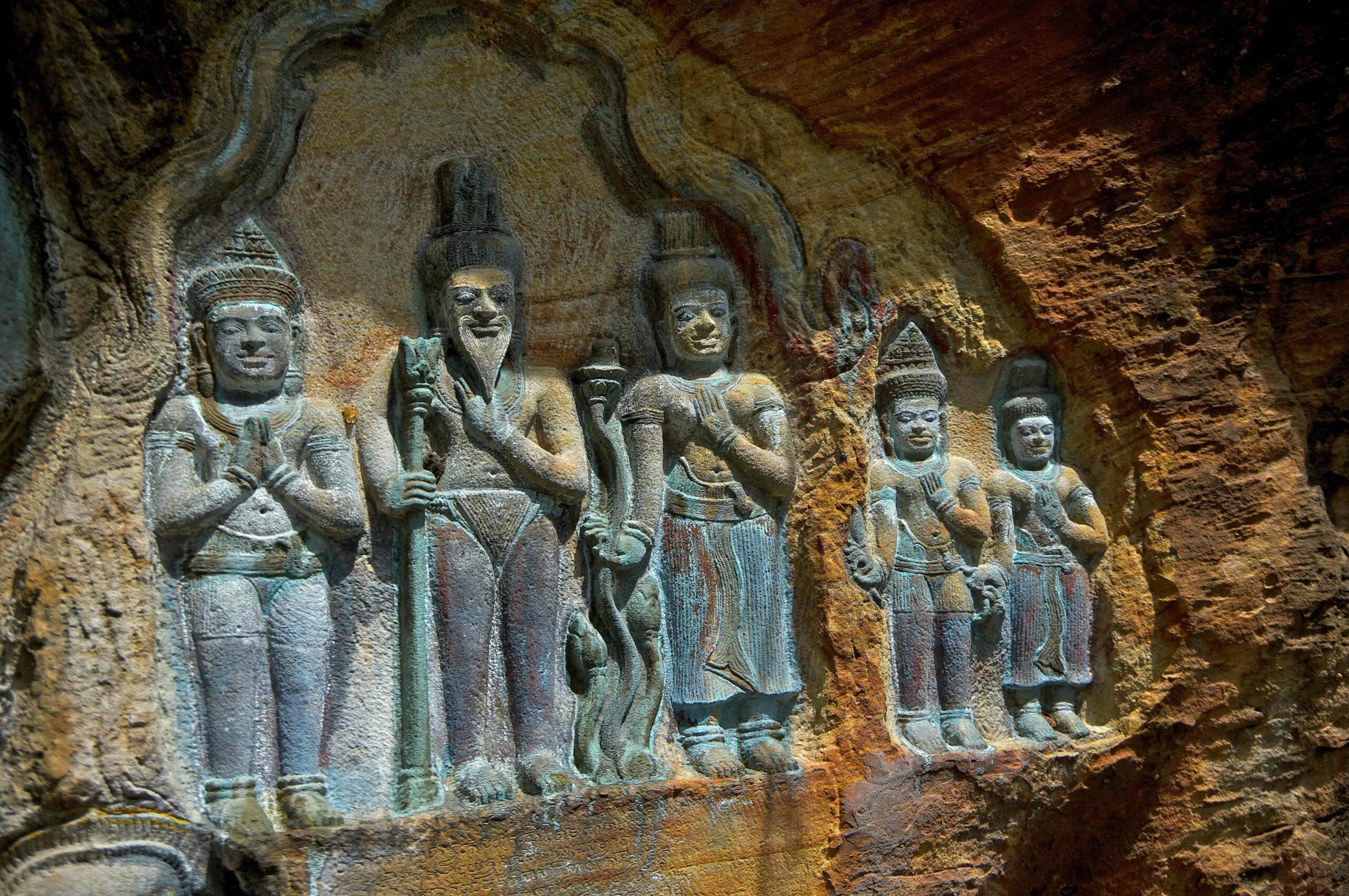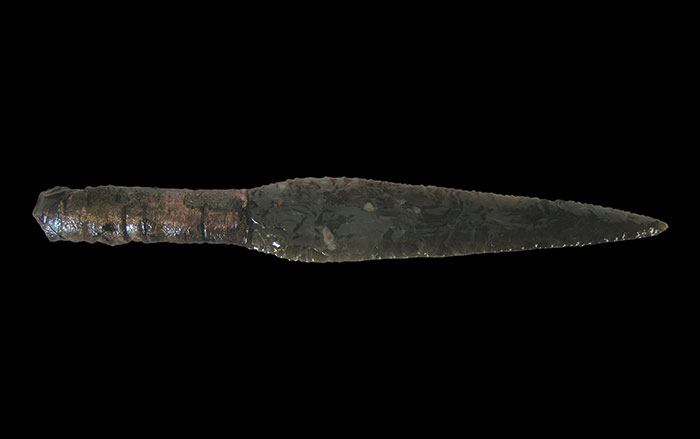
If there’s one thing that the pharaohs of ancient Egypt had in common with legendary filmmaker Cecil B. DeMille, it was an eye for spectacle. Remains of the pharaohs’ grand ambitions have stood in the Egyptian desert for thousands of years. Now, some remains of DeMille’s vision have emerged from the Guadalupe-Nipomo Dunes on the central California coast.
For the 1923 silent film The Ten Commandments (remade by DeMille himself in 1956 with both sound and Charlton Heston), DeMille had workers create a massive set in the dunes, including a 120-foot-tall gate flanked by four statues of Ramesses II and 21 sphinxes. Legend has it that the set was destroyed, but over the years archaeologists—amateur and professional—have uncovered remains from the production and hints that the hollow plaster sphinx statues still lie in situ.

In 2012, the head of one sphinx was excavated, and recently archaeologists from Allied Earthworks, working with the Guadalupe-Nipomo Dunes Center, have excavated the crumbling, weather-beaten body of another. Using the original silent epic to guide their work, the excavators delicately exposed and stabilized the crumbling plaster, which will now be reconstructed for display. “If 1,000 years from now, archaeologists happen to dig beneath the sands of Guadalupe,” wrote DeMille in his 1959 autobiography, “I hope they will not rush into print with the amazing news that Egyptian civilization, far from being confined to the Valley of the Nile, extended all the way to the Pacific coast of North America.”










